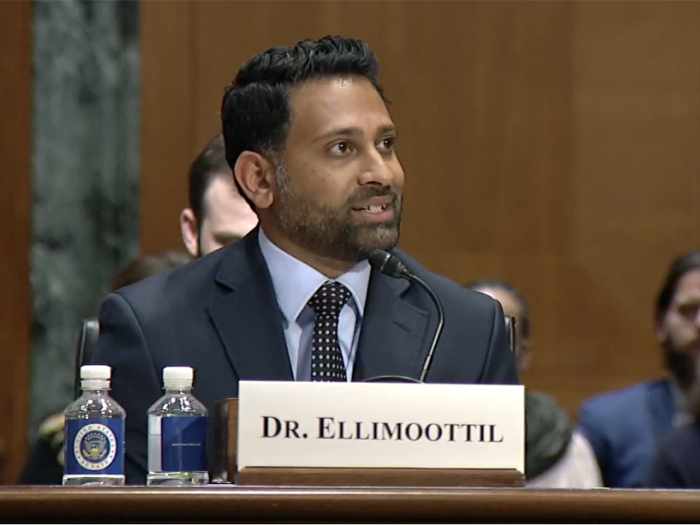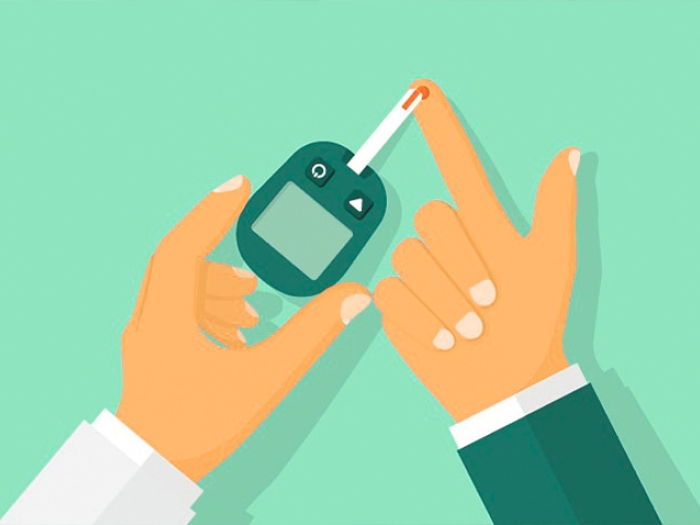Telehealth lets patients see doctors wherever they are, but a study shows that a professional-looking backdrop matters
2:47 PM
Author |

Americans have gotten used to seeing their doctors and other health care providers using telehealth video visits in the past four years.
But a study reveals that what a doctor has behind them during a telehealth visit can make a difference in how the patient feels about them and their care.
Even if the doctor is miles away from their usual in-person clinic or exam room, they should make it look like they’re there, the study suggests.
Even better: sitting in an office with their diplomas hanging behind them – or perhaps having a virtual background that’s a photo of such an office.
This is especially true if they haven’t seen the patient before, the study shows.
A home office with a bookshelf or a plain solid-color background are both acceptable to patients, too.
But providers should use blurred or virtual backgrounds if they carry out the visit in a home environment with a kitchen or a bed in the background, the study shows.
The findings come from a survey that asked patients to react to seven different backgrounds behind a model physician, and to rate how knowledgeable, trustworthy, caring, approachable and professional the physician appeared in each, and how comfortable the patient would feel with that provider.
It also asked them to consider each background for a first or returning appointment with a primary care or specialty provider.
The study is published in JAMA Network Open by a team from the University of Michigan’s academic medical center, Michigan Medicine, and the VA Ann Arbor Healthcare System.
More than 1,200 patients who had seen providers at one of the two health systems completed the study surveys, and the researchers compiled their responses.
Lead researcher Nathan Houchens, M.D., is an associate professor of internal medicine at U-M and associate chief of medicine at VAAAHS. His past work on how interpersonal communications affects the patient-provider relationship – including non-verbal factors like attire and posture – led to the new telehealth study.
“The transition to virtual care was rapid and came without specific guidance during the start of the COVID-19 pandemic, but telehealth appears to be here to stay so it’s important to understand what patients prefer when it comes to the setting their provider is in,” said Houchens, a hospitalist who worked with U-M and VA general internist Jennifer Meddings, M.D., M.Sc. and others on the study.
He notes that during the first year of the pandemic, providers were urged to conduct telehealth visits outside of clinics if they didn’t need to go in, to reduce the chance of COVID-19 transmission.
But now, some clinics have created dedicated spaces for providers to sit in if they have telehealth appointments on days when they’re also seeing patients in person.
Some of those might be spaces shared with other clinicians, so a virtual background would also serve to reduce visual distractions.
Houchens notes that as telehealth increased in use and became a standard way to receive care, some guidance on “webside manner” has been suggested to guide providers in the ways in which they interact verbally over a virtual connection. But very little guidance is available about the background for their video visits.
He and his colleagues were surprised at the level of dislike that patients had for kitchen and bedroom settings, with only 2% and 3.5% saying they preferred these backgrounds respectively, compared with 35% for an office with displayed diplomas, 18% for a physician office, 14% for a plain color background, and around the same for a home office with bookshelf or an exam room.
There were also significant differences in the composite scores for how patients rated the way each background would make them feel about receiving care from the provider.
The bedroom and kitchen backgrounds received far lower composite scores than any of the other five backgrounds.
Houchens and colleagues including co-author Sanjay Saint, M.D., M.P.H., have previously published work on patients’ preferences for what physicians wear during clinical encounters.
Just like with video visit background, these seemingly superficial factors can actually make a difference in the patient experience, he says.
“Patients have expectations of what physicians’ attire and workspaces should look like. This study showed that patients prefer what have been previously termed traditional or professional attire and settings,” he said.
“Diplomas and credentials remind patients of the expertise they expect a physician to have, and conversely, something is lost when the background conveys a relaxed, informal home environment.”
The team is currently analyzing more data from the same study, to assess other factors that affect patients’ telehealth experiences – including their access to high-speed internet and their ability to use necessary technologies.
But for now, they suggest that providers can take immediate steps to conduct virtual visits from an office or exam room. Clinics may want to make unused clinical rooms available for use by providers conducting virtual visits during in-person clinic days.
Another option is to create virtual backgrounds that will evoke these types of professional settings.
Houchens also notes that while they haven’t yet studied what physicians think of the backgrounds behind patients during video visits, these may provide helpful information.
The rise of “Hospital at Home” and home-based primary care means that patients with more acute conditions may be able to see their providers virtually, and that their setting can give clues to the way physical and social factors play a role in their health.
Discussing visible elements from both a provider’s and a patient’s virtual background – art and other hobby-related items, for example – can also help build rapport, Houchens notes.
“This is a reminder that patients often do care about some of the details that providers and health systems may not have emphasized,” he said.
“It’s important to remember that our words and our nonverbal behaviors are taken to heart by those we care for, and it behooves us to care about them as well.”
Meddings and Saint are members of the VA Center for Clinical Management Research and the U-M Institute for Healthcare Policy and Innovation.
In addition to Houchens, Meddings and Saint, the study’s authors are Latoya Kuhn MPH, David Ratz MS, Jason M. Engle MPH of VA CCMR.
Citation: "Patient Preferences for Telemedicine Video Backgrounds," JAMA Network Open, DOI:10.1001/jamanetworkopen.2024.11512
Sign up for Health Lab newsletters today. Get medical tips from top experts and learn about new scientific discoveries every week by subscribing to Health Lab’s two newsletters, Health & Wellness and Research & Innovation.
Sign up for the Health Lab Podcast: Add us on Spotify, Apple Podcasts or wherever you get you listen to your favorite shows.

Explore a variety of health care news & stories by visiting the Health Lab home page for more articles.

Department of Communication at Michigan Medicine

Want top health & research news weekly? Sign up for Health Lab’s newsletters today!





